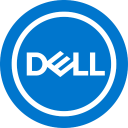In today’s fast-paced business landscape, organizations must be agile and flexible to meet the evolving needs of their customers. However, many still rely on legacy applications that may not be suitable to handle the demands of modern-day business requirements. This can create significant challenges for IT departments that are tasked with maintaining business operations while transitioning to more modern approaches that can drive their companies forward. To overcome these challenges, organizations are increasingly turning to a “cloud-first” strategy for their digital transformation initiatives. This approach involves prioritizing cloud-based, developer-friendly solutions over traditional on-premises software and infrastructure, allowing organizations to leverage thescalability, flexibility, and cost-effectiveness of cloud computing to improve their operations, increase agility, and meet the needs of their customers more effectively.
In order to gain further insights into these trends, TechTarget’s Enterprise Strategy Group (ESG) surveyed 378 IT (40%) and DevOps/ AppDev (60%) professionals responsible for evaluating, purchasing, managing, and building application infrastructure at large midmarket (500 to 999 employees, 11%) and enterprise (1,000 employees, 89%) organizations in North America (US and Canada).






